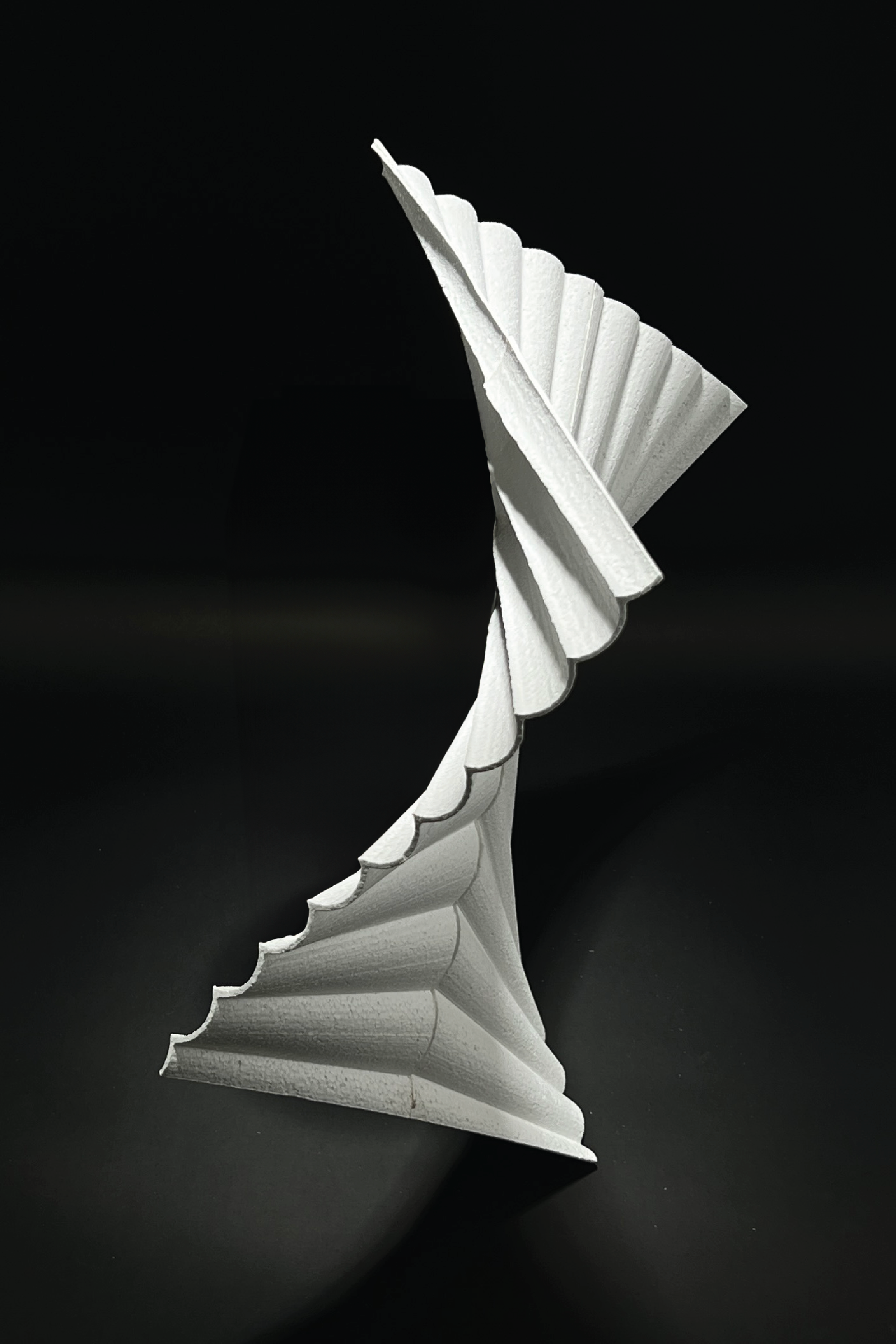Wire-Cut 3D Curved Surfaces

Haresh Lalvani
Student Research Assistants: Ahan Patil, Tyler Haas, Jungbin Park, Chloe Ni, Ashkan Eslamifard
Research Interns: Ahmad Tabbakh, Jungbin Park
Collaborator: Greg Sheward, SOA Robotics Lab
School of Architecture
Wire-cut 3D curved surfaces mimic minimal surfaces which cover space with least material and are also stronger. Large areas can be covered with less material. Conservation of planetary resources is built-in.
The compound curvature of minimal surfaces poses a challenge in construction since most of our building technologies are designed to make straight lines and flat surfaces. Ruled surfaces, 3D curved surfaces made of straight lines (cylinders, cones, hyperboloids, hyperbolic paraboloids, etc.), provide a practical and economic way to build curved-rigid surfaces (shells). The pioneering works of Gaudi, Candela and others have led the way. We apply this method to the building of ruled surfaces that fill 3D space with repeating and non-repeating modules. To the economy of material, we add an economy of means which contributes further to the conservation of our planet’s limited material resources.
Robotic wire-cutting provides an expedient way to realize such surfaces in a material like foam which can be easily wire-cut even though this material puts an upper limit to the sizes of physical structures we can build.
We show a sampling of such surfaces for architectural (and other) applications using generative morphology. These models and images are a small part of the vast inventory of design options available using our method. Their numeric coding enables automated generation of digital morphologies and fabrication of physical structures.
We introduce a class of CORRUGATED RULED SURFACES and extend these to FRACTAL RULED SURFACES.
HISTORY: After Schwarz’s discovery of the first triply-periodic minimal surface in 1890, a large number of such surfaces have been discovered since. New class of surfaces were discovered independently by Burt and Pearce in the 1960’s followed by Schoen (1970). Additional minimal surfaces were discovered by Lalvani in the 1980’s-90’s. At Pratt, we have been interested in these since the early 1970’s. More recently, they have provided the starting point of many explorations at CES in the Morphology program.